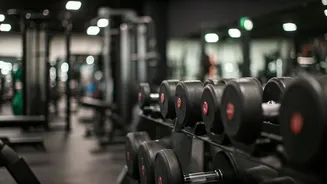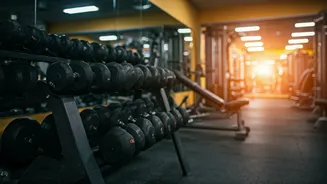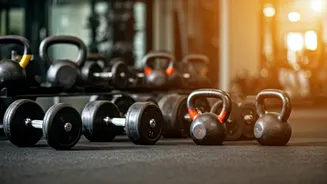Warm-Up: Importance
Before diving into any workout routine, warming up is essential. It's a fundamental step that prepares the body for the exercises ahead. A proper warm-up
increases blood flow to the muscles, making them more flexible and reducing the risk of injury. This is particularly crucial for those over 40, as joints tend to become less flexible with age. Warming up can involve light cardio, like brisk walking or cycling at a low intensity, for about 5-10 minutes. It's also beneficial to incorporate dynamic stretching exercises such as arm circles, leg swings, and torso twists. These movements help to increase the range of motion in the joints and muscles, further preparing the body for the workout. Remember that the warm-up period is not meant to be intense; instead, it's about gradually increasing the heart rate and preparing the body for more strenuous activity.
Incline Walking Benefit
Incline walking is a fantastic exercise for boosting metabolism and burning calories without putting excessive strain on the joints. This low-impact activity is easily adaptable for different fitness levels. To perform this exercise effectively, set a treadmill or an adjustable surface to a slight incline. Begin by walking at a comfortable pace, gradually increasing the incline as you feel more comfortable. This change will activate the muscles in your legs, including the glutes, hamstrings, and calves, leading to more calorie burn than walking on a flat surface. Aim for at least 20-30 minutes of incline walking, adjusting the speed and incline to match your fitness level. This exercise is especially suitable for people over 40, as it protects joints while still contributing to weight loss.
Side Shuffles Explained
Side shuffles are beneficial as they engage multiple muscle groups, including the outer thighs and glutes. This exercise is performed by standing with feet shoulder-width apart and then stepping to the side, maintaining a slight bend in the knees. The key is to keep your core engaged and your back straight. You shuffle to one side for a certain distance and then shuffle back to the starting point. This movement can be modified to suit various fitness levels. If the standard side shuffle feels challenging, shorten the distance of each shuffle or reduce the speed. This exercise helps in building lower body strength and enhancing the stability of the knees, making it a great choice for those aiming for fat loss and better joint health after 40. For enhanced results, incorporate resistance bands around the ankles to increase muscle engagement.
Walking Lunges Details
Walking lunges are another excellent exercise that boosts metabolism and strengthens the legs. Walking lunges target the quads, hamstrings, and glutes. Start by standing upright with your feet together. Step forward with one leg, lowering your body until both knees are bent at about 90-degree angles. Ensure your front knee is over your ankle and your back knee is just above the ground. Push off with your front foot to stand up and bring your back foot forward, repeating the lunge on the other side. This continuous movement provides a great cardiovascular workout alongside strengthening the lower body. As with other exercises, the intensity can be adjusted. Those new to walking lunges should start with shorter distances and focus on maintaining proper form. Over time, the distance and number of repetitions can be increased to make the workout more challenging and effective for fat loss and joint care.
Cool-Down: Importance
Cooling down is an essential part of any workout regimen. It helps the body gradually transition back to a resting state. It's especially crucial for people over 40, as it aids in reducing muscle soreness and preventing injuries. A cool-down period typically involves light cardio exercises, such as slow walking, to gradually decrease your heart rate. It should also include static stretching, which involves holding a stretch for about 20-30 seconds. Static stretches help to improve flexibility and range of motion. Focus on stretching the muscles worked during the exercises, such as the quadriceps, hamstrings, and glutes. These are the muscles primarily engaged in the incline walking, side shuffles, and walking lunges. Remember, the cool-down period is not just about physical recovery; it's also a chance to focus on mental relaxation.










